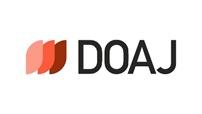Abstract
Dissatisfied customers may express their dissatisfaction behaviorally. These behavioral responses may impact the firms` profitability. How do we model the impact of self regulatory orientation on emotions and subsequent customer behaviors? Obviously, the positive and negative emotions experienced in these situations will influence the overall degree of satisfaction or dissatisfaction with the service(Zeelenberg and Pieters 1999). Most likely, these specific emotions will also partly determine the subsequent behavior in relation to the service and service provider, such as the likelihood of complaining, the degree to which customers will switch or repurchase, and the extent of word of mouth communication they will engage in(Zeelenberg and Pieters 2004). This study investigates the antecedents, consequences of negative consumption emotion and the moderate effect of attribution processing in an integrated model(self regulatory mode → specific emotions → behavioral responses). We focused on the fact that regret and disappointment have effects on consumer behavior. Especially, There are essentially two approaches in this research: the valence based approach and the specific emotions approach. The authors indicate theoretically and show empirically that it matters to distinguish these approaches in services research. and The present studies examined the influence of two regulatory mode concerns(Locomotion orientation and Assessment orientation) with making comparisons on experiencing post decisional regret and disappointment(Pierro, Kruglanski, and Higgins 2006; Pierro et al. 2008). When contemplating a decision with a negative outcome, it was predicted that high (vs low) locomotion would induce more disappointment than regret, whereas high (vs low) assessment would induce more regret than disappointment. The validity of the measurement scales was also confirmed by evaluations provided by the participating respondents and an independent advisory panel; samples provided recommendations throughout the primary, exploratory phases of the study. The resulting goodness of fit statistics were RMR or RMSEA of 0.05, GFI and AGFI greater than 0.9, and a chi-square with a 175.11. The indicators of the each constructs were very good measures of variables and had high convergent validity as evidenced by the reliability with a more than 0.9. Some items were deleted leaving those that reflected the cognitive dimension of importance rather than the dimension. The indicators were very good measures and had convergent validity as evidenced by the reliability of 0.9. These results for all constructs indicate the measurement fits the sample data well and is adequate for use. The scale for each factor was set by fixing the factor loading to one of its indicator variables and then applying the maximum likelihood estimation method. The results of the analysis showed that directions of the effects in the model are ultimately supported by the theory underpinning the causal linkages of the model. This research proposed 6 hypotheses on 6 latent variables and tested through structural equation modeling. 6 alternative measurements were compared through statistical significance test of the paths of research model and the overall fitting level of structural equation model and the result was successful. Also, Locomotion orientation more positively influences disappointment when internal attribution is high than low and Assessment orientation more positively influences regret when external attribution is high than low. In sum, The results of our studies suggest that assessment and locomotion concerns, both as chronic individual predispositions and as situationally induced states, influence the amount of people`s experienced regret and disappointment. These findings contribute to our understanding of regulatory mode, regret, and disappointment. In previous studies of regulatory mode, relatively little attention has been paid to the post actional evaluative phase of self regulation. The present findings indicate that assessment concerns and locomotion concerns are clearly distinct in this phase, with individuals higher in assessment delving more into possible alternatives to past actions and individuals higher in locomotion engaging less in such reflective thought. What this suggests is that, separate from decreasing the amount of counterfactual thinking per se, individuals with locomotion concerns want to move on, to get on with it. Regret is about the past and not the future. Thus, individuals with locomotion concerns are less likely to experience regret. The results supported our predictions. We discuss the implications of these findings for the nature of regret and disappointment from the perspective of their relation to regulatory mode. Also, self regulatory mode and the specific emotions(disappointment and regret) were assessed and their influence on customers` behavioral responses(inaction, word of mouth) was examined, using a sample of 275 customers. It was found that emotions have a direct impact on behavior over and above the effects of negative emotions and customer behavior. Hence, We argue against incorporating emotions such as regret and disappointment into a specific response measure and in favor of a specific emotions approach on self regulation. Implications for services marketing practice and theory are discussed.
Recommended Citation
Sung, Hyung Suk and Han, Sang Lin
(2010)
"고객의 자기조절성향이 서비스 실패에 따른 부정적 감정과 고객반응에 미치는 영향,"
Asia Marketing Journal: Vol. 12
:
Iss.
2
, Article 4.
Available at: https://doi.org/10.53728/2765-6500.1256
Creative Commons License

This work is licensed under a Creative Commons Attribution 4.0 License.




